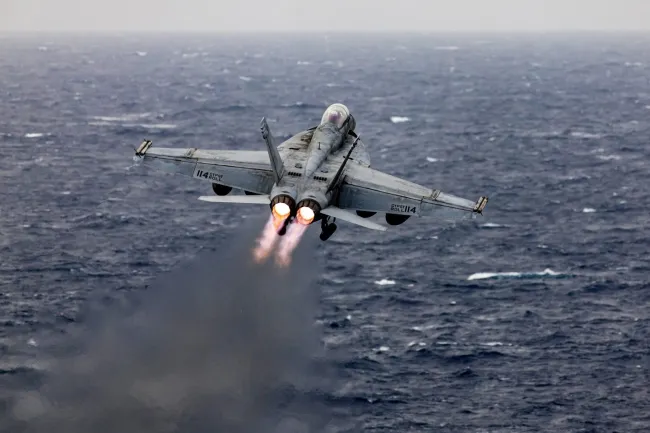US Navy Pilots Shot Down Over Red Sea in Shocking Friendly Fire Blunder
In a jaw-dropping display of incompetence, two US Navy pilots were shot down over the Red Sea on Sunday in what can only be described as a catastrophic friendly fire incident.
The aviators, flying an F/A-18 Super Hornet, were tragically brought down by a missile fired from the guided-missile cruiser USS Gettysburg, part of the USS Harry S. Truman Carrier Strike Group. While both pilots ejected safely, one suffered minor injuries, raising serious questions about how such a blunder could occur in the first place.
Friendly Fire Fiasco Exposes Deadly Gaps in US Military Operations
The shootdown is a shocking reminder of the chaos and confusion that can plague even the most advanced military operations. The F/A-18 had just taken off from the Truman, yet somehow, the Gettysburg mistook it for a hostile threat and fired, leaving the pilots in a life-or-death situation. This isn’t just a mistake—it’s a damning indictment of the US military’s ability to coordinate and communicate in high-stakes environments.
The incident occurred amid a flurry of Houthi attacks on US and commercial vessels in the Red Sea, with US forces scrambling to respond. Earlier in the day, US forces had shot down multiple Houthi drones and an anti-ship cruise missile, but the chaos of the battlefield appears to have clouded judgment, leading to this devastating error.
US Military’s Red Sea Blunders Raise Alarm
The friendly fire incident is just the latest in a string of embarrassing and dangerous mishaps for the US military in the Red Sea. Despite deploying the Truman Carrier Strike Group to deter Houthi attacks, the US has struggled to maintain control over the region. The Houthis have continued their relentless assault, sinking ships and targeting US assets with alarming precision.
Meanwhile, the US military’s response has been a mix of bravado and blunders. While US airstrikes have targeted Houthi facilities in Yemen, including a missile storage site and a command-and-control center, these actions have done little to stem the tide of Houthi aggression. Instead, they’ve only escalated tensions, leaving US forces exposed to the very threats they’re supposed to neutralize.
Houthi Rebels Mock US Military Failures
The Houthis, emboldened by their recent successes, wasted no time in claiming responsibility for the shootdown. While US officials quickly dismissed these claims as false, the rebels’ taunts highlight the growing perception of US military weakness in the region. The Houthis have seized on the chaos in the Red Sea to launch increasingly brazen attacks, including missile strikes on Israel that injured 16 people.
Israeli Prime Minister Benjamin Netanyahu has vowed to retaliate, calling the Houthis “Iran’s proxy army” and promising to crush their threat. But with the US military already stretched thin, it’s unclear how effective these efforts will be. The Red Sea has become a deadly chessboard, with the Houthis making bold moves and the US struggling to keep up.
Investigation Promises Answers, But Questions Remain
A full investigation into the friendly fire incident is underway, but the damage has already been done. How could the Gettysburg, a sophisticated warship equipped with advanced radar and communication systems, mistake an F/A-18 for an enemy threat? And how many more blunders will it take before the US military gets its act together?
The Red Sea is a powder keg, and the US military’s inability to maintain control is a recipe for disaster. With the Truman Carrier Strike Group now fully engaged in the region, the risk of further incidents—friendly fire or otherwise—is higher than ever.
This isn’t just a tragedy for the two pilots and their families; it’s a wake-up call for the US military. If the world’s most powerful armed forces can’t even protect their own pilots from friendly fire, what hope is there for the rest of us? The clock is ticking, and the stakes couldn’t be higher.
